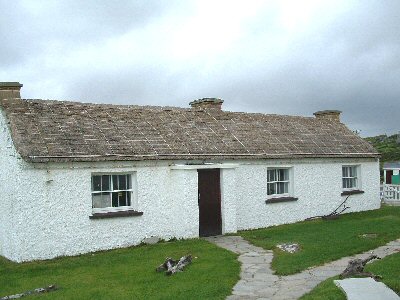I came upon this recently and reflected how true the sentiments and situation were for me and for generations before me. I don’t know the author.
‘The rain poured down in bucketfuls as I cycled home from college some four miles away from our cottage. It was a most welcome sight as I turned into the boreen leading to it. I threw my bike against the wall and ignored Shep’s welcoming barks. The warmth of the kitchen fire met me as I entered.
‘You’re dripping wet! Off with your clothes!’ exclaimed mother as she put more turfs on the fire. The rigours of the weather were soon forgotten as I tucked into a bowl of Irish stew.
I must have dozed off for I drowsily became aware of dishes being moved about and the fresh smell of baking reached my nostrils. Mother emerged into dozy view, surrounded by dishes, packets and bowls containing the ingredients for her next confection. She was spooning handfuls of flour into a large brown bowl. They were strong, work-worn indelicate hands but deft in their movements. As she vigorously scooped and kneaded, these hands were in constant motion, skimming between butter dish, currant packet and bowl. Her careless speed masked a sureness and sensitivity of touch, born of generations of experience.
Mother never used weighing scales or measures when baking. She scorned recipes too. ‘They’d only confuse ye!’ she explained. Everything was measured in handfuls or shakes, or pinches – flour, sugar, salt or ginger, and dried fruits or caraway seeds. Occasionally, with a sly grin, she’d add a few drops of stout or whiskey and say, ‘That’ll make them shout’. She showed her happiness in this demonstration of country skill by singing as she worked. ‘True Love’, ‘Dream a little dream’, etc.
In her youth she became a cook in one of the big houses in the English Midlands. She had coal fires and modern kitchen equipment available to her. I’m sure it came handy to her, but it couldn’t have had the easy, natural grace of this quiet country cottage and its turf fire. The open fireplace with its hanging iron pots and kettles and turf fire persisted here long into the twentieth century.
Having placed the bowl’s contents into a baking tin she stepped to place it in the hearth’s oven. She would never finish without tracing the sign of the cross on top of the loaf. The religious significance may not always have been paramount but it was tradition. She added more burning sods under the oven and on top of the lid to maintain a uniform heat.’
More later!
